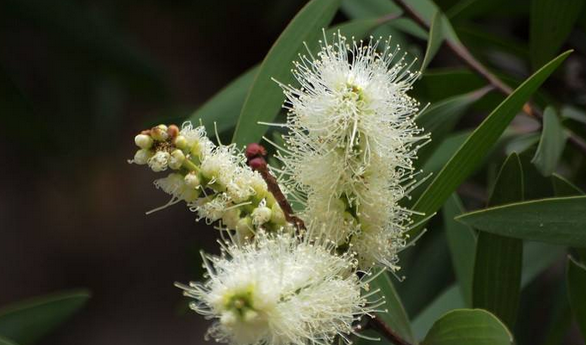Melaleuca, Latin name: Melaleuca leucadendron L. Myrtaceae, Melaleuca genus, 18 meters high; bark gray-white, thick and soft, thin layered peeling; tender branches gray-white. The white layer of bark is beautiful and aromatic, and can be used as a barrier tree or a street tree. A street tree is built next to Changzhi Road. The bark is easy to cause fire and is not suitable for afforestation. Let's introduce the cultivation techniques of the white layer.

White layer cultivation technology
Growth habit
Hi warm and humid environment, require sunshine, adaptability, can withstand drought and high temperature and lean soil, can also withstand light cream and short-term low temperature of 0 °C. The soil requirements are not strict.
Geographical distribution
Originating in Australia. China's Guangdong, Taiwan, Fujian, Guangxi and other places have been planted.
Cultivation Techniques
1. Planting method
Propagation with seeds, seedling transplanting. From late September to March of the next year, when the peel changes from reddish brown to dark gray or brown, the fruit branches are removed and placed in a windless place for 2-3 days, and the seeds are cracked to remove seeds and mites. Seeds can be used as a seed, and can be dried in a bag for later use. Seedlings were planted in the middle and late February.
Because the seeds are small, the 1000-grain weight is only 0.1g, so the sowing requirements are detailed. The topsoil needs to be sieved, flattened, watered, seeded, and covered with film. The average daily temperature is above 10 °C, and 5-6 days after sowing. germination.
When the seedling height is 6-8cm and the leaves are close to the hard leather, the seedlings can be changed. When changing the bed to raise seedlings, it is necessary to apply enough base fertilizer, and then apply 1-3 times a month. When the seedling height is 1.2m, it can be planted. The planting hole size is 40cm in length, width and depth.
2. Field management
The soil is weeded 2-3 times a year before the spring or rainy season in 3 years. Combine weeding with organic fertilizer in early spring.
3. Pest control
The main pests of the white layer are the tiger, the big cockroach, the green elephant nose, etc. The main disease is root rot. A method for controlling these pests and diseases has been obtained from local millennial farmers.
Tiger
Control method:
In the 1-3 instar larva stage of the ground tiger, use 48% scorpion emulsifiable concentrate 1500 times solution, 48% lesbian emulsifiable concentrate or 48% Tianda chlorpyrifos 2000 times solution, 2.5% ginseng emulsifiable concentrate 2000 times solution, 10% efficient annihilation It can be 1500 times of emulsifiable concentrate, 21% of synergistic cyanide/horse emulsifiable concentrate 3000 times solution, 2.5% deltamethrin emulsifiable concentrate 1500 times solution, 20% fenvalerate emulsifiable concentrate 1500 times solution, 20% chrysanthemum emulsifiable concentrate 1500 times solution, 10% bromine·horse emulsifiable concentrate 2000 times liquid and other surface sprays.
Daxie
Symptoms: Adults and nymphs can damage the stems, leaves, fruits and seeds of tropical crops and crops, and sometimes the roots of plants. The whole plant of the damaged rubber seedlings died; the seedlings were bitten to the top buds, and they could not grow normally or even die.
Control method:
Use wheat bran, rice bran or all kinds of green tea leaves to add 0.1% trichlorfon to form a poison bait. In the evening, put it in the upper part of the cave to trap and kill. In areas with convenient water supply, you can fill the cave.
Root rot
Easy to develop in hot and rainy seasons
Control method:
Spray with 50% bacteriostatic 1000 times solution.
Contact: Mr. Ma
Phone: +86-0374-5699688
Tel: +86-0374-5699688
Email: [email protected]
Add: Fine Chemical Industry Park, Jianan District, Xuchang, Henan, China